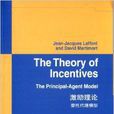《激勵理論:委託代理模型(英文)》是著名微觀理論經濟學家拉奉特以及其學生martimort的合寫的理論著作,其影響力可想而知。經濟學和激勵的關係密切,如激勵努力工作、激勵高質量產品、激勵努力學習、激勵投資和激勵儲蓄。儘管兩百多年前在他的佃農契約分析中充分肯定了這一點,但只有在近些年這個理論在經濟思想中才占據了核心地位。書中,jean-jacques laffont和david martimort對激勵理論的表述是目前最透徹的和最容易學習的。本理論的核心是對現代管理就如同對經濟理論一樣至關重要的簡單問題:是什麼讓人們在一個經濟和商業環境中會有特殊的表現?為了尋找答案,書中給出了特定的環境下能夠確保對經濟機構的良好激勵的方法論工具。
基本介紹
- 書名:激勵理論:委託代理模型
- 作者:拉奉特 (Laffont J.J.)
- 出版社:世界圖書出版公司北京公司
- 頁數:421頁
- 開本:16
- 外文名:The Theory Of Incentives The Principal-Agent Model
- 類型:經濟管理
- 出版日期:2013年1月1日
- 語種:簡體中文, 英語
- ISBN:9787510050503
基本介紹
內容簡介
作者簡介
圖書目錄
Introduction
1Incentives in Economic Thought
1.1Adam Smith and Incentive Contractsin Agriculture
1.2Chester Barlmrd and Incentivesin Management
1.3Hume,Wicksell,Groves:TileFree-Rider Problem
1.4Borda,Bowen,Vickrey:Incentivesin Voting
1.5Leon Walras and the Regulati on of Natural Monopolies
1.6Knight,Arrow,Pauly:Incentivesin Insurance
1.7Sidgwick,Vickrey,Mirrlees:Redistribution and Incentives
1.8Dupuit,Edgeworth,Pigou:Price Discrimination
1.9Incentives in Planned Economies
1.10Leonid Hurwicz and Mechanism Design
1.11Auctions
2The Rent Extraction-Efficiency Trade-Off
2.1The Basic Model
2.2The Complete Information Optimal Contract
2.3Incentive Feasible Menu of Contracts
2.4Information Rents
2.5 The Optimization Program of the Principal
2.6 The Rent Extraction-Efficiency Trade-Off
2.7 The Theory of the Firm Under Asymmetric Information
2.8 Asymmetric Information and Marginal Cost Pricing
2.9 The Revelation Principle
2.10 A More General Utility Function for the Agent
2.11 Ex Ante versus Ex Post Participation Constraints
2.12 Commitment
2.13 Stochastic Mechanisms.
2.14 Informative Signals to Improve Contracting.
2.15 Contract Theory at Work
Appendix
3Incentive and Participation Constraints with Adverse Selection.
3.1 More than Two Types
3.2 Multidimensional Asymmetric Information
3.3 Type-Dependent Participation Constraint and Countervailing Incentives
3.4 Random Participation Constraint
3.5 Limited Liability
3.6 Audit Mechanisms and Costly State Verification
3.7 Redistributive Concerns and the Efficiency-Equity Trade-Off
Appendices
4 Moral Hazard: The Basic Trade-Offs
4.1 The Model
4.2 Risk Neutrality and First-Best Implementation
4.3 The Trade-Off Between Limited Liability Rent Extraction and Efficiency
4.4 The Trade-Off Between Insurance and Efficiency
4.5 More than Two Levels of Perforinance
4.6 Informative Signals to Improve Contracting
4.7 Moral Hazard and the Theory of the Firm
4.8 Contract Theory at Work
4.9 Commitment Under Moral Hazard.
Appendices
5 Incentive and Participation Constraints with Moral Hazard.
5.1 More than Two Levels of Effort
5.2 The Multitask Incentive Problem
5.3 Nonseparability of the Utility Function
5.4 Redistribution and Moral Hazard
Appendices
6 Nonverifiability
6.1 No Contract at Date 0 and Ex Post Bargaining
6.2 Incentive Compatible Contract
6.3 Nash Implementation
6.4 Subgame-Perfect hnplementation.
6.5 Risk Aversion.
6.6 Concluding Remarks
7 Mixed Models
7.1 Adverse Selection Followed by Moral Hazard
7.2 Moral Hazard Followed by Adverse Selection
7.3 Moral Hazard Followed by Nonverifiability
8Dynamics under Full Commitment
8.1 Repeated Adverse Selection
8.2 Repeated Moral Hazard
8.3 Constraints on Transfers: The Role of hnplicit Incentives
9 Limits and Extensions
9.1 Informed Principal
9.2 Limits to Enforcement
9.3 Dynamics and Limited Commitment
9.4 The Hold-Up Problem
9.5 Limits to the Complexity of Contracts
9.6 Limits in the Action Space
9.7 Limits to Rational Behavior
9.8 Endogenons Information Strnctures
References
AuthorIndex
SubjectIndex

